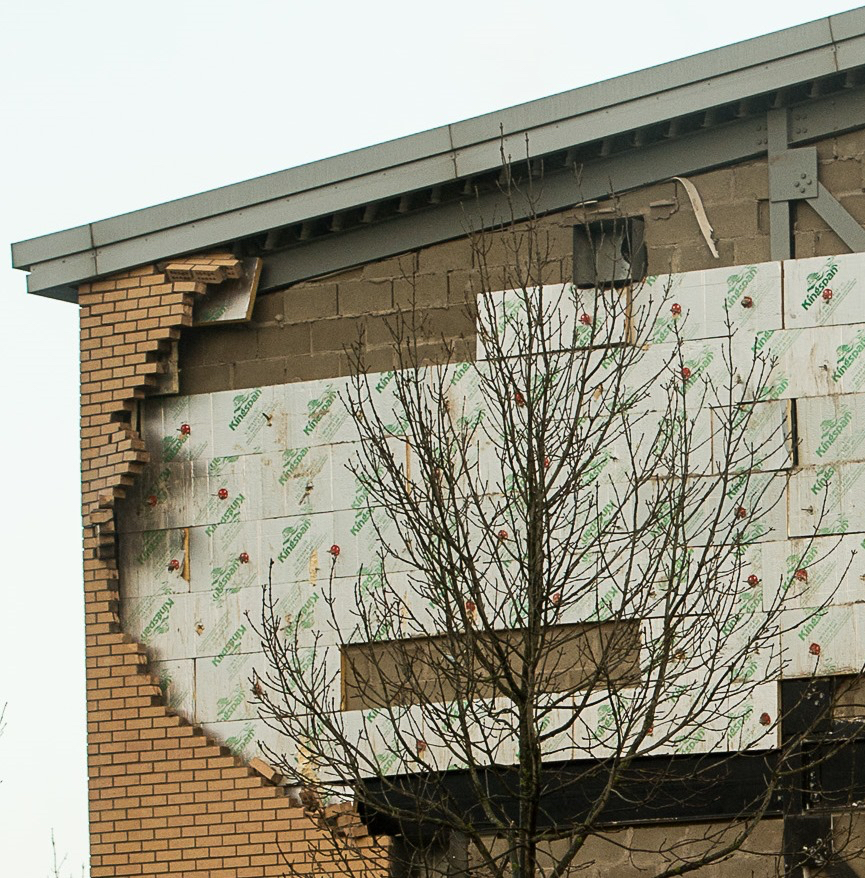Dear Spurtle
David Sterratt’s article ‘Piecing together what's gone wrong’ (12.4.16) was well written, well researched.
It seems to me we need a clear detailed explanation (like his) of how safety is being determined. We are in the hands of experts, but even experts should be accountable. Clearly, the experts got it wrong before, both in the original build and in the investigation of the same problem at Lourdes Primary in 2012.
Some of the problem is there for all to see at Oxgangs Primary: the photo below shows that ties were fitted between the two skins of masonry. By scaling from the photo, the density of ties is (or was) ~3 per sq m, which aligns with building standards. Worryingly, they have all pulled out of the brickwork and been left behind, so one wonders if they were properly bonded in the bricks. How this can be checked?

I can’t see any evidence in the photo of ties to the steel structure. Nor do I know what was intended or required in this respect. But since the inner wall is intact, it would have provided an anchor – so ties to the steelwork may be irrelevant.
So, do engineers really know/understand why the wall at Oxgangs collapsed in high winds? I would have thought that there are large margins of safety, so are a few missing ties really the whole explanation? Quoting from the article attached here: ‘Brick veneer is frequently blown off walls of residential and commercial buildings ….’
Personally, I would give these brick walls a wide berth during high winds. (I’ll be in Drummond today, helping with an Engineering Science class, but the forecast looks good so no worries.)
David Craig
[e-mail address supplied]
----------------------------
 Dominic Berry It's funny how schools built in Victorian times or earlier stay standing for ever, whereas many of those built recently start falling down almost immediately. And it isn't only schools: a few years ago beams kept on falling off the ceiling of the debating chamber in the Scottish Parliament. We replace old buildings at our peril!
Dominic Berry It's funny how schools built in Victorian times or earlier stay standing for ever, whereas many of those built recently start falling down almost immediately. And it isn't only schools: a few years ago beams kept on falling off the ceiling of the debating chamber in the Scottish Parliament. We replace old buildings at our peril!